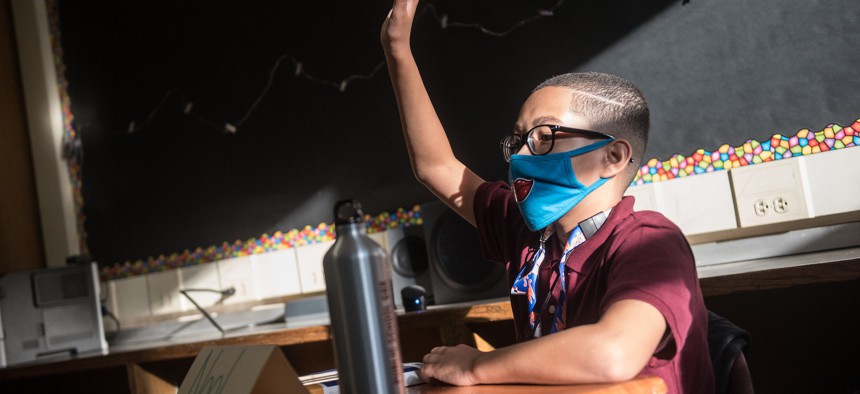Education
Quantifying the remote learning disparity in NYC
Remote attendance data was released for the first time.

A student at One World Middle School in the Bronx. Michael Appleton/Mayoral Photography Office
New York City has an internet access problem, and, like many other issues that plague the city, that problem has a disproportionate effect on poor residents and people of color. A 2019 report from city Comptroller Scott Stringer’s office found that about 44% of city residents in poverty lacked broadband access, and that almost one-third of Black and Hispanic New Yorkers lacked access, compared to about 20% of white residents.
It should come as no surprise that this disparity has affected New York City’s ongoing experiment in remote learning. A City Council analysis of new data from the city Department of Education showed that largely Black and Hispanic schools were more likely to report low remote learning attendance, solidifying anecdotal reports of racial disparities in how students are able to access education in the middle of the pandemic. The new analysis showed that schools in which at least half of the population is Black and Hispanic were almost eight times more likely to report low student engagement or poor attendance.
This marked the first time the city released remote attendance information broken down by demographic group, and City Council members called for more of this kind of detailed reporting. At a hearing on school reopening on Friday morning, Education Committee Chair Mark Treyger asked the Department of Education to report on additional metrics, pointing to twobills that would require just that.

NEXT STORY: SoHo rezoning not a safe bet with Manhattan BP candidates